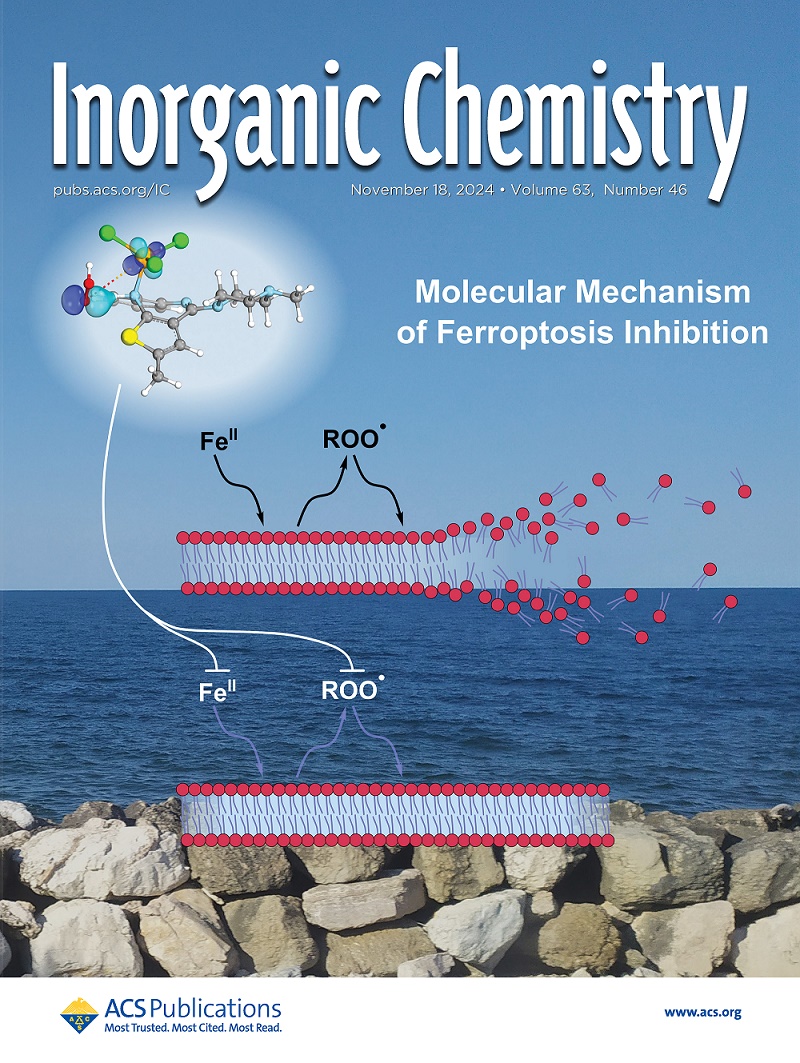配体水与 Py-NO 之间形成氢键导致的二茂钛水络合物抑制脱水缩聚倾向:机理与应用
IF 4.7
2区 化学
Q1 CHEMISTRY, INORGANIC & NUCLEAR
引用次数: 0
摘要
二茂钛水配合物(TACs)表现出多种活性,其关键取决于在水介质中保持其分子完整性。然而,钛(IV)中心的强亲氧性使得这些配合物容易发生不希望的脱水缩合反应,这严重损害了它们的结构稳定性。为了解决这一挑战,我们开发了一种简单而有效的策略,通过引入吡啶- n -氧化物(Py-NOs)作为辅助配体,在水环境中显著稳定tac。包括光谱分析和DFT计算在内的综合机理研究表明,稳定性的增强主要源于tac和Py-NOs之间分子间氢键的形成。这些相互作用有效地抑制了Ti(IV)介导的水解途径,同时保留了复合物的功能。本文章由计算机程序翻译,如有差异,请以英文原文为准。

The Inhibited Dehydration Polycondensation Tendency of a Titanocene Aqua Complex Attributed to the Formation of Hydrogen Bonds Between the Ligand Water and Py-NO: Mechanism and Application
Titanocene aqua complexes (TACs) demonstrate versatile activities that critically depend on maintaining their molecular integrity in aqueous media. However, the strong oxophilicity of Ti(IV) centers renders these complexes prone to undesirable dehydration-condensation reactions, which severely compromise their structural stability. To address this challenge, we developed a simple yet effective strategy for dramatically stabilizing TACs in aqueous environments through the introduction of pyridine-N-oxides (Py-NOs) as auxiliary ligands. Comprehensive mechanistic investigations, including spectroscopic analyses and DFT calculations, reveal that the enhanced stability originates primarily from the formation of intermolecular hydrogen bonds between TACs and Py-NOs. These interactions effectively suppress Ti(IV)-mediated hydrolysis pathways while preserving the complexes’ functionality.
求助全文
通过发布文献求助,成功后即可免费获取论文全文。
去求助
来源期刊

Inorganic Chemistry
化学-无机化学与核化学
CiteScore
7.60
自引率
13.00%
发文量
1960
审稿时长
1.9 months
期刊介绍:
Inorganic Chemistry publishes fundamental studies in all phases of inorganic chemistry. Coverage includes experimental and theoretical reports on quantitative studies of structure and thermodynamics, kinetics, mechanisms of inorganic reactions, bioinorganic chemistry, and relevant aspects of organometallic chemistry, solid-state phenomena, and chemical bonding theory. Emphasis is placed on the synthesis, structure, thermodynamics, reactivity, spectroscopy, and bonding properties of significant new and known compounds.
 求助内容:
求助内容: 应助结果提醒方式:
应助结果提醒方式:


